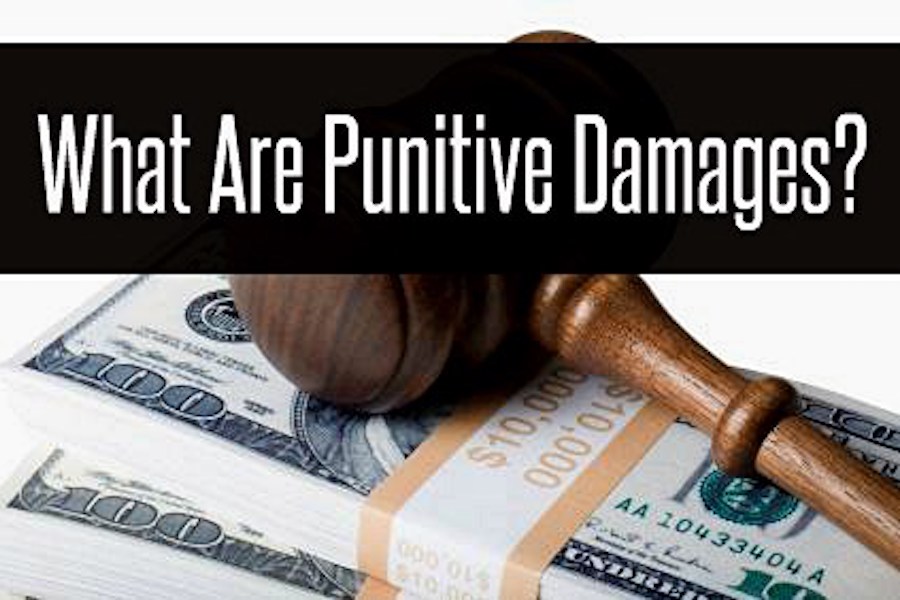Re Whitehead Estate 2010 BCSC 348, the deceased was a founding member of a credit union and a retired bank manager. After his death, a “trued up” copy of will dated December 21, 1979 was found, but the original of that will was never located.
Under the will his sister was to receive $356,000, whereas on an intestacy, the sisters estate would receive 120,000. The sister had survived her brother, but subsequently died leaving two daughters.
The deceased was a meticulous record keeper who wrote letters to friends prior to his death that said she was getting her affairs in order, and did not want to leave loose ends for executors.
The deceased met with her financial advisors three times in the last month of her life. The financial advisor said that the deceased had plans to establish funds for various charities so as to reduce gifts to individuals and had placed $400,000 aside and guaranteed investment certificates.
The deceased solicitor had died and the original will was not found amongst his files.
The proposed administrator of the deceased estate made an application for a declaration that the deceased died intestate rated
The application was allowed.
No evidence was called to establish that the copy of will was properly executed in the first place, or was in fact a true copy of will.
There was no presumption that the will was destroyed, as there was no evidence that the deceased ever had possession of the original will.
20 The test for proving a lost will requires proof of the due execution of the will; particulars tracing possession of the will to the date of death, and afterwards if the will was lost after death; rebuttal of the presumption that the will was destroyed by the testator with the intention of revoking it; and proof of the contents of the lost will: Sorkos v. Cowderoy, [2006] O.J. No. 3652(Ont. C.A.).
21 Similarly, in O’Donovan v. O’Donovan, [2009] O.J. No. 5020(Ont. S.C.J.) the court noted that:
As previously stated, the original wills have not been located. Sheila found signed copies in the residence. Proving a lost will can be accomplished; that is proof as to its contents, due execution and testator’s capacity: see Oosterhoff on Wills and Succession, 5th edition, Carswell 2001 at p. 355. Professor Oosterhoff adds the propounder of the will “… must usually also overcome the presumption of destruction “animo revocandi” … if the will was last known to be in the deceased’s possession”: see, also, Lefebvre v. Major, [1930] S.C.R. 252(S.C.C.); and Sorkos v. Cowderoy (2006), E.T.R. (3d) 108 (Ont. C.A.). This concept follows the English authorities: see Sugden v. Lord St. Leonards(1876), 1 P.D. 154(C.A.).
There is no issue arising in this case as to the deceased’s testamentary capacity.
22 The applicant referred to Goudge, Re, [1978] N.B.J. No. 337(N.B. Prob. Ct.). In that case one of the issues was whether or not there was a properly executed will. The solicitor who had drawn the will testified that he was one of the witnesses to the execution of the will by the testatrix. He also said the second witness was present at the time the will was executed. On that evidence the will was proven to be a copy of a properly executed will.
23 The applicant says that kind of evidence is missing in this case. Not only has the solicitor who drew the will died, but also there is no one available who can identify the witnesses to the will whose names appear in the “trued up” copy. While the will has all of the appearances of a copy of a properly executed will, the applicant says that it cannot be presumed to be properly executed by appearance only and requires evidence from someone who can swear that it is a true copy of will and that it was properly executed.
24 In Goudge’s Estate, supra., and other cases such as Green Estate, Re, 2001 ABQB 835(Alta. Q.B.), and Flaman Estate, Re, [1997] S.J. No. 442(Sask. Q.B.) evidence was presented by a witness who was able to testify to the proper execution of the will and that it was a true copy of the original.
25 In Flaman, the court held that the two main requirements to admit a copy of will to probate are that there be proof of execution of the original and proof of the contents. The court held that there was no proof of execution of the will and it was not admitted to probate. Instead, a direction was given that proper proof of execution was required. The court referred to Williams on Wills, 5th ed., Vol. 1 (London, Butterworths, 1980) at p. 96 where it was stated:
… Where a testamentary document has been lost or destroyed in such a way as not to effect a revocation probate may be granted of the contents thereof upon proof of such contents and due execution and attestation of the instrument. Where the person setting up an alleged will cannot produce any copy or draft or any written evidence of its contents, he must prove all these matters so as to remove all reasonable (but not all possible) doubt on these points
. . . . .
9 As well, R.B. Rowe, E. Heward & G.F. Dawe, eds, Tristam and Coote’s Probate Practice, 25th ed. (London: Butterworths, 1978) sets out at p. 561 what an affidavit should show if, as in this case, no copy or draft of the will is available. First of all, “[i]f the original will was not forthcoming at the death of the testator, the full circumstances in which it was last known to be in existence but failed to be forthcoming at the death.” Secondly, “[d]ue execution of the original will, which should, whenever possible, be proved by one of the attesting witnesses.” Thirdly, the affidavit must also show “[w]ho are the persons prejudiced by the admission of the document sought to be established … and whether they are all sui juris.” Is there anyone who would take a greater interest under an intestacy or under an earlier will? Fourthly, the affidavit should “depose to the contents of the will as set out in a reconstruction, which should be in the form of a separate document exhibited to the affidavit.”
10 T.G. Feeney in The Canadian Law of Wills, states at p. 99 that:
… [P]robate may be granted of the contents of the lost will, after proof of due execution, on such secondary evidence as a copy or a draft or solicitor’s notes or any other written evidence; and indeed, if it is sufficiently clear, even oral testimony may be probated.
And the 35 C.E.D. (West. 3rd), Vol. 35, states at p. 155-162, s. 179 that:
S. 179 Should the presumption be rebutted, the lost will may be admitted to probate upon proof of due execution, and evidence of its contents may be adduced by way of a copy or a draft, solicitor’s notes or other writings, or even by oral testimony.
[Emphasis added]
26 In this case, there is no evidence to identify the witnesses to the execution of the will nor is there any evidence to show that the will is a true copy of the original will. While the copy presented has all of the characteristics of a legitimate copy of an original will, on the authorities it cannot be presumed that the original was properly executed or that the copy presented is a true copy. The authorities require proof of both.
27 It may be that the necessary proof can be presented through means other than a witness to the execution of the will. For example, proof of the usual practice followed by a solicitor or legal assistant that a will was only “trued up” once it had been properly executed and compared to the original may be sufficient to show that it is in fact a true copy. But some evidence is necessary to establish the necessary facts and here there is none. There is no witness available or even identified to say that the will was properly executed nor is there anyone to attest to any other evidence to establish that the copy of will is a true copy as that term is understood in law. Even if the standard of proof is lower than a balance of probabilities there is an absolute absence of any evidence whatsoever in this case.
28 The applicant is therefore entitled to succeed on the ground that there is no evidence upon which the court can conclude that the will of the deceased was properly executed or that it is a true copy of the original will.
29 If that conclusion is incorrect and the will is in fact properly executed and a true copy of the original, the next issue is whether the original will can be traced to the possession of the deceased. If it can be traced to her possession then on a finding that the original has been lost, the presumption arises that it has been destroyed with the intention of revoking the will. Feeney in The Canadian Law of Wills, 3rd edition, vol. 1 at pp. 134-135 states:
The same presumption, that of destruction animo revocandi, that arises when a destroyed or mutilated will is found among the testator’s papers on his death, arises also when it is shown that the testator’s will was last traced to his possession but cannot be found on his death. The presumption is well recognized in Canadian case law, but the fullest inquiries for the lost will must be shown to have been made for a court to apply the presumption in the first place. The presumption is often rebutted either by the circumstances tending to show a contrary conclusion or by declarations made by the testator showing that he regarded the lost will as valid and subsisting. However, strong evidence is usually needed to rebut the presumption.
30 The beneficiaries under the will submit that there is no evidence to suggest that the deceased was in possession of the will. No one has said that the original will was ever known to be in her possession nor is there any reference in the affidavit material to a comment of the deceased that she had at any time had the original of her will in her possession. The deceased named her solicitor as the sole executor of her estate without any alternates and it is likely that the original at least initially remained in his possession. The beneficiaries also say that if the deceased was in possession of her original will, there was no need for her to keep a copy in a briefcase containing other important papers. See Haider v. Kalugin, 2008 BCSC 930(B.C. S.C. [In Chambers]), at para. 22.
31 On the evidence presented in this case, I am not able to find that the deceased ever had possession of the original will and therefore the presumption that the will has been destroyed with the intention that it be revoked does not apply.
Conclusion
32 On the evidence the applicant is entitled to a declaration that the deceased died intestate as there is no evidence that the copy of will presented in evidence was ever properly executed by the deceased or that it is in fact a true copy of will.





